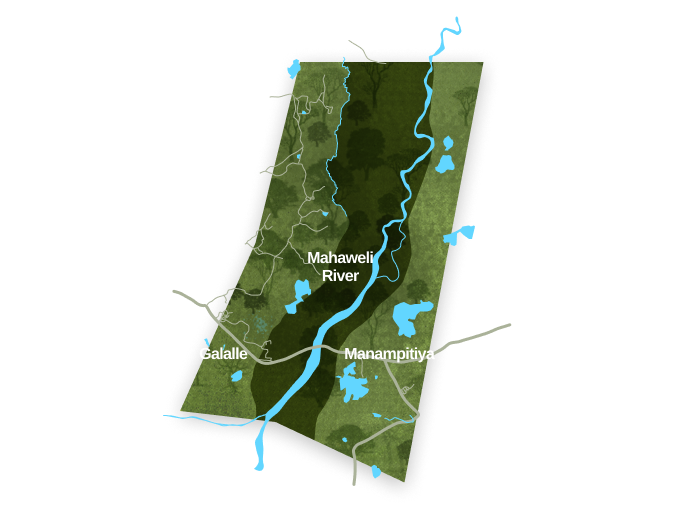Where the Mahaweli River spills into lush villus and seasonally flooded grasslands, Flood Plains National Park emerges as a hidden sanctuary teeming with life. Set within the Mahaweli Development Project’s ecological corridor, this park is a vital feeding ground and migratory link for Sri Lanka’s wild elephants. Rich in water, wildlife, and wilderness, it offers a glimpse into one of the island’s most vibrant and dynamic ecosystems, ever changing, yet timeless in its rhythm.






Where Water Breeds Abundance
Flood Plains National Park sits at the heart of Sri Lanka’s longest river system, playing a crucial ecological role in connecting the forests of Wasgamuwa and Somawathiya. Its vast villus, shallow grassy wetlands, become emerald stages where elephants graze in herds and deer gather in silence. With every flood cycle, life renews itself.
The park’s rich soils and aquatic habitats attract a wide array of wildlife. Predatory cats such as the fishing cat and rusty-spotted cat roam the fringes, while water buffalo and wild boar cool off in the shallows. Reptile lovers will find both mugger and estuarine crocodiles basking along muddy banks, alongside rarely seen natricine water snakes.
What to Expect in Flood Plains National Park
Though remote and lesser-travelled, Flood Plains rewards those in search of quiet encounters with nature. Safari drives or river-based explorations reveal an untouched wilderness where birdlife thrives, elephants move undisturbed, and the interplay between water and wildlife is endlessly fascinating.
This is not a park of grand crowds, but of subtle grandeur. For those drawn to Sri Lanka’s more secret corners, the Flood Plains offer something rare: a chance to witness the pulse of the island’s wild heart beating in step with the flow of its greatest river.”